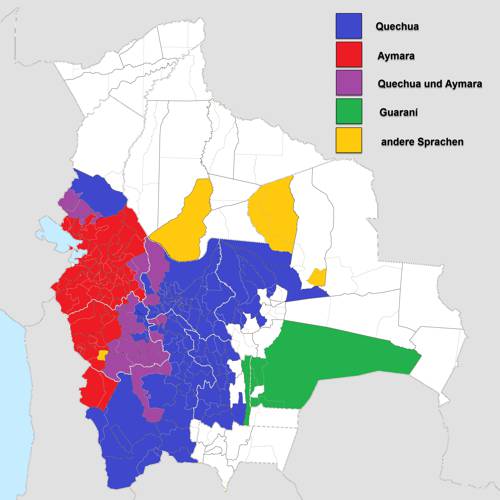
FAQ About Role of Indigenous Languages in Modern Crime Fiction

What is the significance of incorporating indigenous languages in crime fiction?
Incorporating indigenous languages in crime fiction adds cultural depth and authenticity to the storytelling. It allows the narrative to resonate more deeply with readers familiar with those cultures, and can introduce new cultural perspectives to those unfamiliar with them. This integration can also help in preserving and promoting the use of indigenous languages, showcasing their beauty and complexity within a modern context.

How does the use of indigenous languages enhance the storytelling in crime fiction?
Using indigenous languages in crime fiction can provide a unique narrative tone and enhance the setting's authenticity. It can offer readers insight into cultural nuances and local dialects that enrich the plot and character development. This layer of authenticity can foster a deeper emotional connection between the reader and the narrative.

Can indigenous languages in crime fiction contribute to language preservation?
Yes, by incorporating indigenous languages into widely-read genres such as crime fiction, authors can contribute to the preservation of these languages. Exposure through novels and media can raise awareness about indigenous languages, encouraging interest in their study and use. This can support broader efforts to maintain and revive languages that are at risk of being lost.

Are there any notable crime fiction works that include indigenous languages?
There are several notable works in crime fiction that include indigenous languages. For instance, works by Tony Hillerman often feature the Navajo language, adding depth and authenticity to his settings and characters. Similarly, authors like Arthur Upfield incorporate Aboriginal languages and Australian landscapes into their mystery novels.

What challenges might authors face when integrating indigenous languages into crime fiction?
Authors may face challenges such as accurately portraying indigenous languages without perpetuating stereotypes or inaccuracies. They need to conduct thorough research and often collaborate with native speakers to ensure authenticity in language use. Additionally, balancing the use of indigenous languages with accessibility for a broader audience can be tricky, requiring skillful integration of translations or context clues.

How do indigenous languages in crime fiction impact reader perceptions of indigenous cultures?
Indigenous languages can significantly influence reader perceptions by providing a more genuine representation of indigenous cultures. This can counteract stereotypes and offer a more nuanced understanding of cultural practices, beliefs, and histories. By experiencing stories through the linguistic lens of these cultures, readers gain insights that highlight their richness and diversity.

Is the use of indigenous language in crime fiction a recent trend?
While the incorporation of indigenous languages in crime fiction has become more prevalent in recent years, it is not entirely a new trend. Historical works have occasionally used these languages, but the recent focus on cultural authenticity and diversity has spotlighted this practice, encouraging more authors to explore these elements in their stories.

What are some potential benefits for indigenous communities when their languages are featured in crime fiction?
Featuring indigenous languages in crime fiction can bring several benefits to indigenous communities such as raising awareness about their language and culture, contributing to language preservation efforts, and providing economic benefits if the community is involved in the production or translation processes. It can also offer a platform for indigenous storytellers to share their perspectives.

Are translations necessary when using indigenous languages in crime fiction?
Translations are often used when incorporating indigenous languages into crime fiction to make the text accessible to a wider audience. Authors may include translations within the narrative or use footnotes and glossaries. However, some writers choose to leave certain phrases untranslated to preserve authenticity, relying on context to convey meaning.

How do authors ensure authenticity when using indigenous languages in crime fiction?
Authors can ensure authenticity by engaging in comprehensive research and consulting with native speakers and cultural experts. This collaboration helps in accurately portraying the language and cultural practices within the crime fiction narrative. Involving indigenous consultants or co-authors can further reinforce the authenticity of the portrayal.

Do indigenous languages play a role in plot development in crime fiction?
Yes, indigenous languages can play a crucial role in plot development by offering unique plot devices and narrative techniques. They can be used to unveil critical clues, create suspense, or add layers of mystery that are intrinsically tied to the cultural setting of the story. Language can also define character roles and relationships within the narrative.

How might readers unfamiliar with indigenous languages engage with crime fiction that includes them?
Readers unfamiliar with indigenous languages can engage with such crime fiction through context provided by the author, including translations, descriptive cues, and character interactions. Authors often use literary strategies to ensure that the story remains engaging and understandable, even when readers are not familiar with the language used.

What role does cultural consultation play in the use of indigenous languages in crime fiction?
Cultural consultation is crucial when integrating indigenous languages in crime fiction as it ensures respectful and accurate representation. Consultants provide insights into appropriate language use, cultural practices, and societal norms. This practice helps prevent misrepresentation and supports the author's efforts to portray an authentic narrative.

Are there publishers specializing in crime fiction with indigenous language content?
While there aren't many publishers dedicated exclusively to this niche, several general publishers are open to crime fiction that incorporates indigenous languages. Publishers with a focus on diverse voices, multicultural literature, and indigenous authors may be more likely to embrace such works. Authors may also explore small independent presses known for their support of indigenous literature.

How can crime fiction writers subtly incorporate indigenous languages without overwhelming readers?
Writers can subtly incorporate indigenous languages by using selective phrases or words contextually, providing translations where necessary, or integrating them into dialogue. They might also intersperse vocabulary in a way that enhances the setting or plot without detracting from the readability of the text, often through in-story explanations.

Can indigenous languages influence the themes explored in crime fiction?
Indigenous languages can significantly influence the themes explored in crime fiction by highlighting cultural issues, histories, and perspectives relevant to the indigenous community. Themes such as identity, heritage, justice, and colonial impact might be explored more profoundly through the linguistic lens of indigenous cultures.

What ethical considerations should authors keep in mind when using indigenous languages in crime fiction?
Authors should be mindful of cultural sensitivity, ensuring they portray indigenous languages and cultures respectfully and accurately. They should avoid cultural appropriation by engaging with communities and obtaining permissions or input where necessary. Ensuring that the portrayal does not perpetuate stereotypes or violate cultural taboos is also crucial.

Are there workshops or courses for writers to learn about incorporating indigenous languages in crime fiction?
Yes, there are workshops and courses available for writers interested in incorporating indigenous languages into their work. These programs often cover topics such as cultural literacy, language acquisition, and collaboration with indigenous people. Institutions and organizations that focus on multicultural and indigenous literature frequently offer such resources.

Why is there growing interest in crime fiction featuring indigenous languages?
There is growing interest in crime fiction featuring indigenous languages due to a broader movement towards diversity and authenticity in literature. Readers and writers are increasingly recognizing the value of including diverse voices and cultural perspectives, which enhances storytelling and offers fresh narratives that challenge conventional genres.

Can crime fiction featuring indigenous languages appeal to a global audience?
Crime fiction featuring indigenous languages can indeed appeal to a global audience, especially as interest in diverse and unique narratives grows. Readers around the world are increasingly eager to understand different cultures and viewpoints, and the authenticity and depth provided by indigenous languages can offer them a new way to experience crime fiction.
